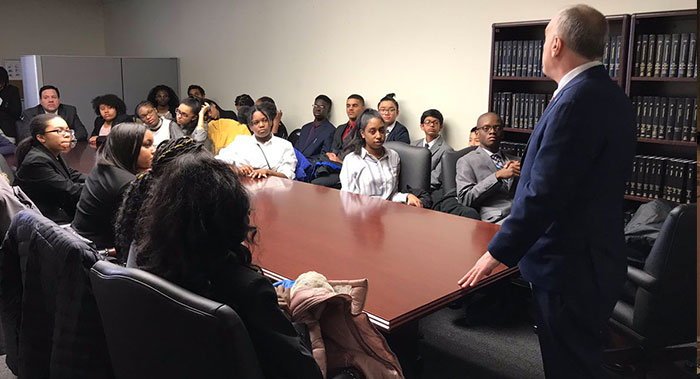Photo Courtesy of Comptroller DiNapoli’s Office
Delays in reporting complaints could leave a student subject to more bullying, Comptroller DiNapoli noted.
By Forum Staff
The City Department of Education was not doing enough to report incidents of bullying, harassment, and discrimination as required by the State’s Dignity for All Students Act, according to an audit recently released by State Comptroller Tom DiNapoli.
Complaints of student-to-student bullying, discrimination, and harassment in city schools are supposed to be entered into the DOE’s online database within 24 hours. Any incidents that DOE determines are material DASA-related incidents of bullying, discrimination, or harassment based on differences of gender, race, ethnicity, sexual orientation, gender identity or other qualities, are to be reported annually to the State Department of Education, the comptroller noted. While officials at the schools visited by DiNapoli’s auditors said the reporting system itself can be challenging, the audit found many errors in identifying such incidents and evidence of significant underreporting that could be corrected through better training.
During visits to 25 schools, DiNapoli’s auditors found that incidents were not always recorded in DOE’s database because staff differed on when something had to be reported. For example, staff at some schools told auditors that incidents were only reported if there was a physical fight, that behavior had to occur three times to qualify as bullying, that an incident might be minimized to protect a college-bound student and that only certain incidents were reported because recording all the incidents between students was too onerous.
The audit also found DOE maintains conflicting guidelines on what constitutes bullying. The agency’s Discipline Code says bullying is “a pattern of behavior,” while the Commissioner’s Regulations state bullying may be “a single verified incident or a series of related verified incidents.” This has resulted in an inconsistent understanding among staff, which influenced incident reporting, DiNapoli noted.
Additionally, incidents recorded in DOE’s online database were often recorded late, according to the audit. About one-fifth of the 752 recorded complaints at the 25 schools examined in the analysis were not entered on time. Some were entered as much as 56 days after the incident occurred. Delays in reporting complaints could leave a student subject to more bullying, DiNapoli posited.
For school year 2015-2016, DOE did not report any material incidents to SED for 670 of 1,600 schools; and in 2016-2017, it did not report any material incidents for 570 schools. Moreover, in both years, DOE did not report any material incidents at 387 of those schools. Among the schools with no reported incidents for three years running are some of the City’s largest, according to the audit.
DOE’s annual survey of parents, teachers and students in grades 6 through 12 seems to contradict the absence of incidents, auditors noted. At some schools with no reported incidents, a significant number of students responded to the survey that harassment, bullying and intimidation occurred “Most of the time” or “Some of the time.”
DiNapoli’s audit offered several recommendations, including that the DOE: proactively identify schools at risk of underreporting incidents or incorrectly categorizing incidents as “other” and take corrective actions; make the Discipline Code’s definition of bullying consistent with the definition in the Commissioner’s Regulations; and require more frequent training of staff to recognize and understand incidents of bullying, harassment and discrimination and how to properly record them.

